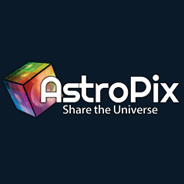What in the Universe: Neutron Star Merger
Video Player
Video Versions
What caused a flash of light in this galaxy?
Produced by the Space Telescope Science Institute’s Office of Public Outreach in collaboration with NASA’s Universe of Learning partners: Caltech/IPAC, NASA Jet Propulsion Laboratory, Smithsonian Astrophysical Observatory, and Sonoma State University.
- Gif image of fading flash and galaxy image in background: NASA/ESA
- Animation of two neutron stars: LIGO-Virgo
- Visualization of gravitational waves: Christopher W. Evans/Georgia Tech
Written by Leah Ramsay
Designed by Leah Hustak and Dani Player
Editorial and design input from Dr. Quyen Hart, Yesenia Pérez, and Margaret W. Carruthers
Designed by Leah Hustak and Dani Player
Editorial and design input from Dr. Quyen Hart, Yesenia Pérez, and Margaret W. Carruthers
Music courtesy of Music for Non-Profit
(SPEECH)
[NO SPEECH]
(DESCRIPTION)
A series of space-related graphics. Text, What In The Universe?
A series of space-related graphics. Text, What In The Universe?
(SPEECH)
[MUSIC PLAYING]
[MUSIC PLAYING]
(DESCRIPTION)
Date switches between Aug 22 and Aug 26. Text, What caused the flash in this galaxy? A. Birth of a star. B. Asteroid collision. C. Neutron star merger. D. Supernova explosion
Date switches between Aug 22 and Aug 26. Text, What caused the flash in this galaxy? A. Birth of a star. B. Asteroid collision. C. Neutron star merger. D. Supernova explosion
A highlight over answer C, Neutron star merger
Text, Neutron Star Merger, Galaxy NGC 4993, Constellation Hydra. The flash of light shown rapidly fading in these 2017 Hubble images was produced by the merging of two neutron stars. Hubble Space Telescope Near Infrared Light.
This is the first time that light was detected from the same merger event that produced gravitational waves.
Visualization. Gravitational waves are ripples in the fabric of space-time itself, a disturbance caused by extremely dense objects like the two neutron stars.
Lines spin around the stars.
Text, The ripples traveled across space to Earth, where the LIGO-Virgo detector network picked up the extremely small stretching and compression of space.
The spinning picks up speed.
Text, Gravitational waves are a new source of information about the universe, like adding the sense of touch to the sense of light.
Astronomers have only just begun to learn what this new source of information can teach us about the universe.
The purple and teal object spins into wider circles of teal and green.
